The studio recording and editing take various gear to organize the fast and efficient performance. While the high-quality sound is a must-have, many tasks like recording, mixing, editing require complete silence and strong pure signal. That’s where the best headphones for music production enter the game. In the busy studio, they let concentrate on the task, while being aware of the studio life around.
While studio headphones should be of high quality, in other parameters they differ from the headphones you would buy for music listening. Here, there’s no need for boosted bass or rounded highs, and the slightest coloration can be a hindrance. So, when looking for the headphones to work over your audio, pay attention to the following specs:
- Driver size and quality. The larger driver made of premium material ensures the exact sound reflection without adding reverberation or noise.
- Frequency response. Wider is better, and flatter is better, too. The sound should be balanced, yet, not boosted.
- High resolution. In order to work with DAW software, the headphones should reproduce the high-resolution audio in a proper way, without compression. Otherwise, the output will differ from the expected result.
- Minimal latency. While not so important for simple editing tasks, low latency is crucial for recording and mixing, as well as detail calibration.
- Long-time wearing comfort. Studio work takes hours; thus, the headphones should be lightweight and soft-padded, while not warming the ears too much. Rotatable design is a must-have.
Consider the listed factors and choose the best headphones for producing of music!
Headphones for Music Production Reviews
Audio-Technica ATH-M50x
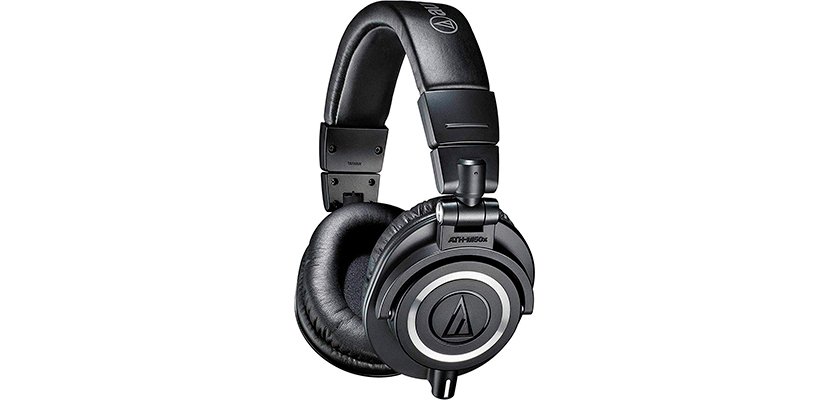
High-quality components, solid overall build, and high-fidelity sound transmission make this model worth the name of best headphones for music production. Still, their closed-back design results in less open soundstage and could become an issue for mixing purposes.
The headphones suit various studio tasks. Good sensitivity and standard impedance let them pair well with most audio gear enabling the clean output and high accuracy of sound reproduction. The soundstage has good density and brings a lot of detail. Though it doesn’t provide as much space feeling as in quality open-back headphones, it ensures good depth and precise sound transmission on all frequency levels.
The ATH-M50X frequency response is wide capturing lows at 15 Hz and featuring consistent highs at 28 kHz. While the middle frequencies don’t provide completely even signal reproduction (there are moderate peaks and “gaps”), the overall audio goes composed and natural. Treble is very bright enabling to discern each tune and estimate the overall balance. The bass end is a bit boosted yet detailed. It doesn’t boom or overly rock but brings some pleasant depth and additional vibe.
The headset has a bulky yet comfortable design. Its dimensions are 11.4 x 10 x 4.1 inches, and the model weighs a bit over 10oz. The padding is circumaural and soft. While it blocks the outer noise quite well, it doesn’t cause the ear to warm up too much or sweat. The cups with 90-degree swivel enable one-ear listening. There are three types of cables supplied having a good thickness and non-entangling design.
Pros
- Precise sound imaging, with clear (though a bit recessed) middle line.
- Very detailed sound fit for monitoring, editing, DJ-ing.
- Sturdy body and hinges, thick plastic and metal.
Cons
- The ear cups are really small so the foam on the inside would press up against the ears, making ears hurt.
- Rather a strong clamping — might be an issue for the users with a big head.
Video Audio-Technica ATH-M50x
Sony MDR7506
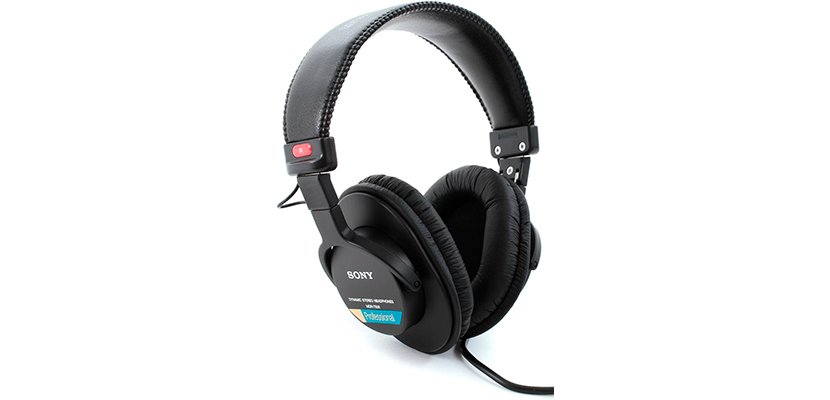
If you aim for the even, balanced frequency response throughout the range and true-to-source sound, look no further — these features grant the 7506 model the place among the best music production headphones since 1991. While the build and sound reproduction deserve the high marks, the permanently wired cable might become an issue at the extended use, as twisting and pulling are unavoidable in the studio work.
The headset boasts the 1.5-inch driver bringing detailed bass with considerable depth, which is ideal for monitoring the low-end and mixing the bass-bound compositions. The midrange is precise and consistent, with sharply outlined instruments and vocals. Highs are bright and thoroughly shaped, the audio staying clear up to the upper limit of the frequency range. They’re reproduced with high detail; yet, no shrieking or another high-end interference is heard.
Overall, the Sony MDR7506 frequency response has an incline into the lower part of the range, starting from 10 Hz wave capturing. The neodymium magnet used in the driver and 63-Ohm impedance provide good volume and depth when the headphones are connected to the powerful source like DAW, studio mixer, while the quality MP3 player does just as well.
The headphones are lightweight with just 8.1oz to press on the head. The closed-back design proves good isolation from the environment and small sound leakage outside the set. While the soundstage cannot compete with top open-back models, it features some depth and has exact imaging. That makes the headphones suitable for sound mapping and general editing tasks, as well as DJ-ing activities.
Pros
- Good sensitivity (106 dB) keeps the audio clear at high volume.
- Cups color labeling lets discern the left and right part immediately.
- Long (9.8 ft), partly coiled cord brings certain freedom of movement.
Cons
- Warm up the ears considerably at long-time wearing.
- The padding feels cheap.
Video Sony MDR7506
Beyerdynamic DT 770 PRO
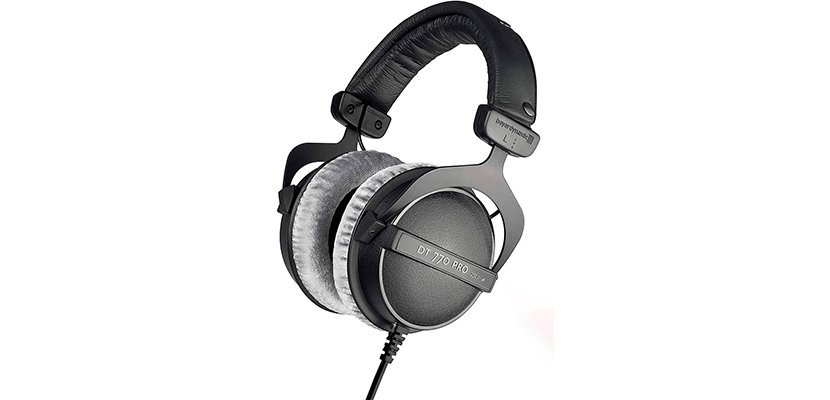
Aimed at the serious studio tasks, these professional headphones will immerse you into the detailed sound with high clarity and authenticity. The high impedance, while enabling the critical analysis and mixing of the most complex compositions, requires the relevant pro-grade amplification and proves to be useless with smartphones and other low-powered gear.
Premium components in these diffuse field headphones enable the vast frequency range of 5 Hz — 35 kHz. The signal is solid throughout the range, with the sweet spot in the mids. The vocals are exactly outlined, with significant detail and natural trail. The bass is highly accurate, deep, and dynamic. Highs are pictured clearly, not overly bright yet well discernible, with slightly accentuated peaks. Overall, the sound is well-composed and even, perfect for most monitoring and editing tasks.
Closed-back in appearance, the headphones don’t provide complete isolation and allow some the spacious effect of the open-type sets. As a result, they bring highly detailed soundstage with accurate imaging and high transparency. The dynamic attack and balanced representation of all frequencies earn this model the title of the best soundstage headphones among closed-back sets, while it still yields in the spacious effect to the premium open-back models.
The headphones are compact (7 x 4 x 8.5 inches) but carry the considerable weight of 10.2oz. Still, the durable construction features good ergonomics, which compensates for the weight. The clamping strength is medium not letting the headphones slide over while keeping them not too tight on the head.
Pros
- The neutral sound signature without boosted or reduced frequencies.
- Fit well for medium-sized and large heads.
- Velour earpads bring comfort and don’t cause sweating.
Cons
- Wired-in cord, no good for moving around.
- Earcups don’t rotate aside.
Video Beyerdynamic DT 770 PRO
Sennheiser HD 650
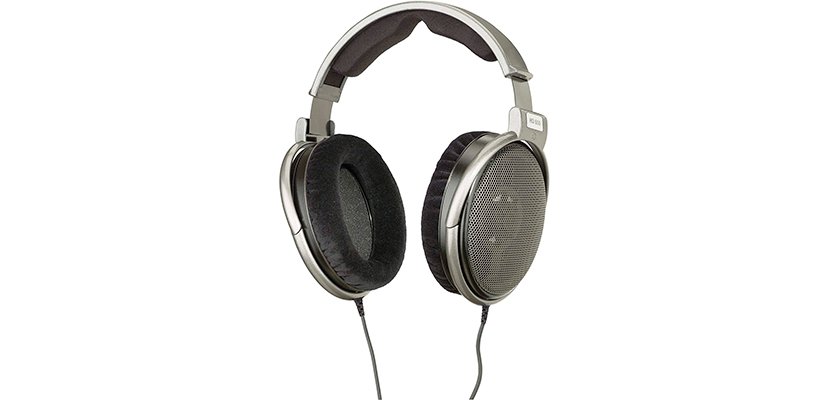
Designed as the audiophile-bound gear, these headphones have several parameters making them the best headphones for recording and other music production tasks. They represent the sound with high accuracy and true to the source, with minimal distortion and discolored flat signal. Meanwhile, the supplied OFC wire is rather thin and might cause interference at extended usage.
With 300-Ohm amplification, the Sennheiser HD 650 provides powerful solid sound at high volume, which is great for monitoring purposes. The high-quality neodymium magnets and thin wire coil ensure precise sound transmission with high dynamics. There’s a lot of punch, while none of the frequencies is emphasized or recessed.
The HD 650 frequency response is also pro-grade. Providing 10 Hz — 39.5 kHz, it features even audio throughout the range. There’s a slight recession in between from lows to mids, while the overall performance is highly composed and neutral. The bass doesn’t boom or gets muffled, at the same time, it is punchy and concentrated on most of the low-end range. Mids put a fraction foremost, with highly detailed, exactly shaped vocals and a ton of nuance. Treble is also accurate and detailed, there’s no ringing peaks or smeared transitions.
The design is practical and provides comfortable wearing for a long time. There are no collapsible or rotating cups; however, the solid build ensures occasional fall protection and long service life. The earpads are quite large (fitting the overall headset design having 12.4 x 10 x 4.33 inches) but lightweight (0.57lbs) and are covered with silky cloth. The clamping isn’t hard, while the band is full-sized fitting even large heads.
Pros
- Spacious soundstage with good depth and detailed sound picture.
- Handles various music genres from classic to metal with high dynamics and precision.
- Multiple-positions headband adjustment mechanism.
Cons
- Don’t fit for usage in a noisy environment.
- The cups’ finish gets scratched easily.
Video Sennheiser HD 650
Sennheiser HD25-1 II
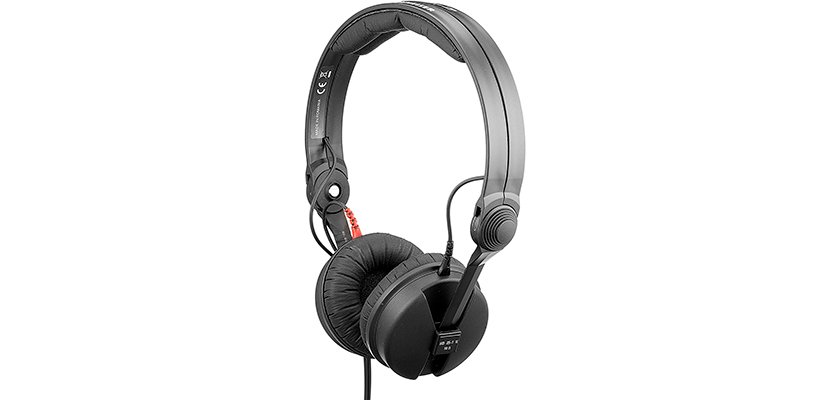
Need a workhorse headphones for music production, with a high-definition sound that will endure extensive use and versatile tasks? Budget- and quality-wise, the Sennheiser HD25-1 II is a great option. Their closed-back design and sturdy build serve for upper-class noise isolation, while the slight bass boost and middle line recess might become an issue during vocals monitoring or complex editing.
The impedance of this headset makes 70 Ohms, which brings enough clarity and sound dynamics, while not requiring an upper-class amplification. Meanwhile, the quality neodymium magnets enable high sensitivity level making this model a good monitoring option.
The frequency response is close to standard starting from 16 Hz and reaching 22 KHz. The extreme frequencies (both lows and highs) are a bit harsh, while also detailed and precisely outlined. Bass in the Senn HD 25-1 II has good resolution and is very dense providing a lot of attack. Treble is a bit recessed and creates the impression of the rounded fluent sound. While the overall sound is pleasant and accurate, the monitoring and mixing of the complex composition might provide a slightly different result from what is expected. Still, the middle line is very clean and neutral. Each sound is well-shaped and exactly articulated.
The headphones have minimalist design providing enough comfort for studio work. The clamping isn’t hard and is performed mostly by the earcups, not the band. The cups are middle-sized (the headphones dimensions are 3.3 x 7.4 x 9.8 inches), with vinyl padding and sturdy outside plastic. The headset can be completely disassembled and assembled again, while all the parts are replaceable.
Pros
- High-level noise isolation in both directions.
- The thick steel cord ensures consistent sound transmission.
- Very lightweight (5oz), don’t press on the head.
Cons
- Narrow and shallow soundstage.
- The cord is 6.5ft, which could be short for DJ-ing / mixing / moving around.
Video Sennheiser HD25-1 II
Sennheiser HD280PRO
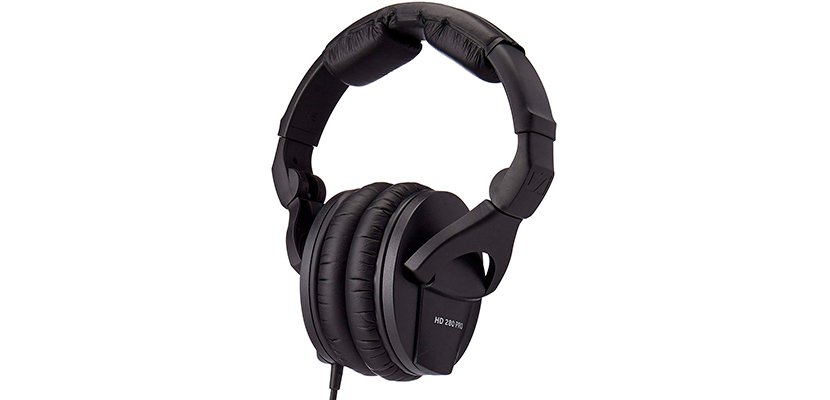
Minimal distortion, clean neutral sound, and enhanced noise protection mark this set as the best recording headphones among closed-back models. It features decent soundstage and has well-shaped highs and lows. At the same time, the headphones and the cord are relatively heavy (weighing 1.28lbs) and bulky (9.64 x 7.36 x 3.3 inches), which can cause discomfort upon a few hours of wearing.
The headset is versatile and fits for different studio activities including recording, editing, monitoring, etc. It features a middle-level impedance of 64 Ohms and can be used with the various sound equipment. At the same time, the max capacity is 500W, which makes a good basis for the high-definition sound transmission.
The frequency range of the set is 8 Hz – 25 kHz; it picks and transmits the bottom lows and upper-level highs accurately, without much emphasizing. In general, the frequency response is even, without significant peaks or valleys. The bass is solid and precisely shaped, without piled up harmonics or reverberations. The treble might seem harsh when it arrives at the highest end; still, preserving their detail and overall accurate imaging. The middle line is well-heard and detailed.
These music production headphones are solidly built, all the parts and hinges are made of thick durable yet soft plastic. The headband features puffy padding for higher comfort, while the clamping of this model can be estimated as middle-to-hard. The earcups can rotate each direction enabling one-ear monitoring. The cord is built-in, with plastic protection at the output, and is quite long (6ft). It’s coiled and can be extended, if needed, up until 9.8ft.
Pros
- Good imaging, with precise instruments picturing.
- Consistent noise cutting up to 32 dB.
- Perforated leather on padding doesn’t stick to the skin.
Cons
- Warm up the ears quickly.
- Embouchure padding scratches and peels off over time.
Video Sennheiser HD280PRO
AKG K240
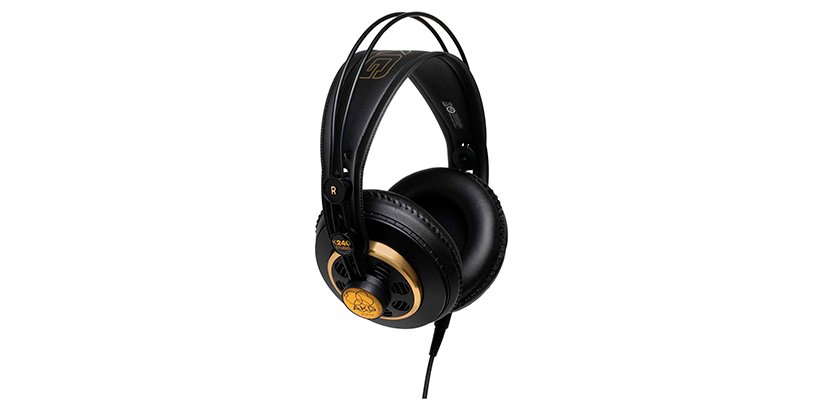
If you’re on a budget but need pro headphones for recording or sound editing purposes, the AKG K240 is a worthy option to look into. Thanks to the original construction, it delivers very accurate natural and spacious sound with precise picturing throughout the frequency range. Meanwhile, the latter is pretty standard; so, if you plan on mastering the high-pitched phrases, you might find a bit of recess out there.
The headphones enable a wide range of studio occupations and are efficient in all genres except the ones set on extended bass. The semi-open design brings three-dimensional vast soundstage with exact imaging and accurate detail. The 55-Ohm impedance supports the good dynamic range and high sensitivity. Overall, the sound is natural and fluid, without coloration.
The AKG K240 frequency response has a bit extended high-end (up to 25 kHz), with even linear representation. While mids and highs are reproduced clearly, with good dynamics and a lot of detail, the lower end (starts at 15 Hz) feels rolled off and hushed up. Lows are present; still, what falls beneath 100 Hz feels thin and lacks attack.
Design and connectivity also make the strengths of this headset. It looks expensive and stylish, while the actual touch reveals middle-level plastic and average-built hinges. Meanwhile, the overall headset size is 4.3 x 7.48 x 7.87 inches and 8.5oz. The headband is the solid type, with the adjustable protection layer. This construction brings less flexibility than regulated models; yet, it proves to be quite comfortable for extended monitoring and mixing tasks.
Pros
- High clarity; great for mastering compositions without heavy bass.
- Good isolation level for the open-back type; at the middle volume, little of the ambient sound is heard.
- Mini-XLR jack ensures solid connection and distortion-free sound.
Cons
- Thin cable breaks easily.
- Headband rollers scratch the ear cup back.
Video AKG K240
Status Audio CB-1
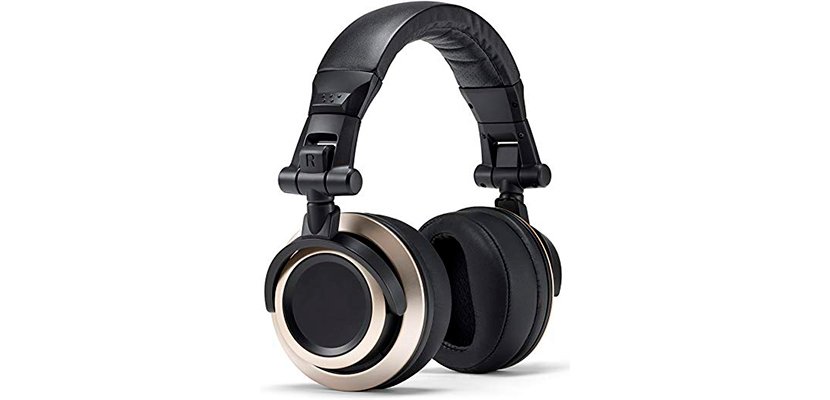
If you’re on a tight budget but looking for the best headphones for recording vocals for a home studio, these brand-less headphones would hardly be beaten. With the closed-back design, they create a vast soundstage with good depth and imaging and deliver consistent and precise treble. Still, pay attention that the midrange isn’t as impressive and, out of the sweet spot, might feature the unintended resonance.
With the 32-Ohm impedance and good sensitivity, this headset delivers a well-shaped, mostly neutral sound with a slight accentuation on low frequencies. Their sensitivity makes 97 dB and they’re comfortable to listen to at low-to-middle volume. The sound features a good amount of detail and is clear enough for preliminary monitoring or editing purposes.
The frequency response has the extended high-end laying between 15 Hz and 30 kHz. The bass has good weight and on certain spots expands widely; generally, featuring a lot of softness. The mids might sometimes get smeared with the upper lows; otherwise, going decently outlined. Highs feel close and consistent, without the tendency to shrieking or attenuation.
The CB-1 headphones feature an unusual branding-free design. There’s no mark of a brand or model, while the right and left ear cups are labeled relatively. The plastic is soft and nice to touch, and the metal rings on the cups make the headset look and feel much more expensive than it actually costs. The headband is adjustable and features lavish padding providing the long-wear comfort. The earpads also have thick cushions and feel light on the ears. The headphones have 6.54 x 3.62 x 8 inches and weigh 0.5lbs.
Pros
- Exact imaging of instruments and vocals.
- Ergonomic earpad design with the wider back part.
- Coiled and straight cables supplied feature the securing mechanism keeping them in place.
Cons
- Inconsistent sound isolation.
- Wrinkled padding is non-aesthetic and tends to a quick wear-out.
Video Status Audio CB-1
Samson SR850
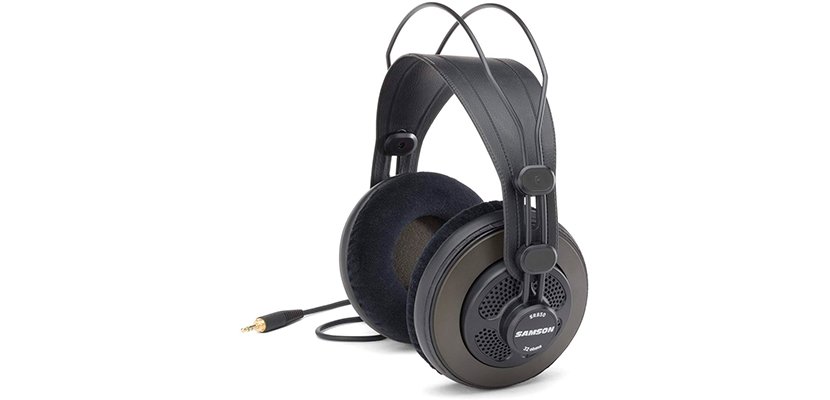
For the price at least two times less than its competitors, this model delivers the flat accurate sound and immersive soundstage and can be used as a sound engineer, DJ or producer headphones. Another side of this high sound-to-cost value is the cheap thin plastic and non-detachable cord suggesting more frequent repairs and replacement than more expensive models.
At the heart of the headphones, there are big 1.9-inch drivers bringing high dynamics and good resolution to the sound. The latter can be described as mostly neutral, without noticeable highlights. The headphones provide accurate imaging and frequency “shaping” letting hear the detail well.
The Samson SR850 frequency response is precise, with well-discernible yet not too accentuated bass (starting at 10 Hz) and bright treble (up to 30,000 Hz). Mids feature some gaps at the lower end, while generally representing an even linear response. The audio has good weight and balance providing the precise sound picture as transmitted by the source.
The soundstage is both wide and deep, with high detailing of each “spot” within. The imaging is quite accurate and lets define each sound exactly. That’s great for editing and live monitoring, as well as voice mastering.
With standard dimensions (8 x 8 x 4.8 inches), the SR850 looks big and reliable. The construction might seem fragile to the touch, while the moving parts and padding are assembled thoroughly not featuring lifts or loose spots. The clamping force of the headband might be a bit hard (partly induced by 1lb weight of the set), while the metal rods could be slightly bent to diminish it.
Pros
- Small impedance lets use the set with various audio sources.
- Comfortable self-adjusting band.
- Non-sweating velour pads.
Cons
- Feature sibilant sound out-of-the-box.
- Cable jacks don’t seem to be reliable.
Video Samson SR850
Buyer’s Guide
How does Frequency Response Affect Headphones for Music Production?
When working on the new audio or editing the recorded one, the frequency response of the headphones is crucial for the correct understanding of the sound parameters and their adjustment. Frequency response means the tonal mapping of the sound, the way certain frequencies are reproduced. There are headphones with “bright highs” or “accentuated mids” or “overcoming bass”. However, the studio headphones are valued for the flat frequency response, when all the tunes are heard the way they’ve been recorded. The main parameters are frequency range and the way lows, mids, and highs are represented.
Width of the frequency range
The frequency range shows the spectrum of sound reproduced by headphones in an optimal way. Usually, the headphones’ actual range is wider than the specifications chart suggests; still, the frequencies that are outside the defined range are played with less sound pressure and might be less faithfully represented.
For the purpose of sound monitoring, and especially editing, mixing and mastering the extended frequency range is a helpful parameter letting spot the strengths and weaknesses and identify them precisely. On professional studio sets, the range can start as low as 5 Hz and the treble can reach 40 kHz.
Lower playback frequency
The low-end frequency consists of bass and sub-bass, which take the range from 20 Hz to 250 Hz. Many modern reference headphones are stated to reproduce the 10 Hz frequency and even go lower. However, the signal below the 10 Hz is subject to multiple interference factors including vibration and outside noise. The sound can become muffled or overly thumping, and additional harmonics might appear.
Some headphones’ manufacturers list the bottom-low frequencies (as 1 Hz) as the lower limit of the frequency range. Still, to provide a consistent playback at such frequencies the considerable power should be supplied (and maintained) by the speaker. It means that the driver parameters rather than the outreach in the frequency response, determine the lower frequency playback (its balance, attack, and accuracy of reproduction). The pro studio headphones usually feature a graduate drop in the response, and such models are capable of a rather faithful reproduction of 5 Hz frequencies. The low diaphragm amplitude cuts on excessive reverberation leaving the clean sub-bass tunes. Some headphones are capable of playing the infrasound; still, the human ear not capable of catching and interpreting the wave, this feature will most likely stay unnoticed by the user.
Upper playback frequency
The sound signal starting from 5 kHz and higher is considered the upper frequency (named “treble” or “highs”). These are the sounds of many wind instruments and also of high-pitched vocals.
While the common frequency range of the music listening headphones usually falls beneath the 20 kHz limit, the headphones intended for music production feature the extended frequency range. That helps define the sounds precisely and perform in-depth editing. Some pro-grade headsets represent the treble quite bright and sharp. The detailed exactly outlined highs help sound professionals create a balanced and consistent sonic picture.

Hi everyone! I’m Thomas Moody, also known as Guitarzan.
